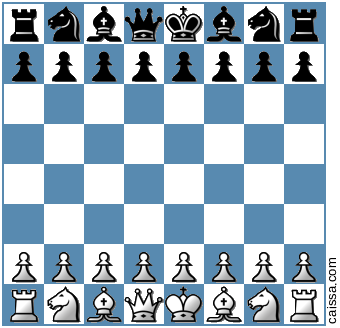|
|
Viewer |
|
|
|---|

| A13 English |
| Agincourt Defense. Bogoljubow Defense |
| Richard Reti vs Efim Bogoljubov, 1924 |
| 1-0, 25 moves |
|
|
|
[Event "New York"] [Site "New York"] [Date "1924.??.??"] [EventDate "?"] [Round "?"] [Result "1-0"] [White "Richard Reti"] [Black "Efim Bogoljubov"] [ECO "A13"] [WhiteElo "?"] [BlackElo "?"] [PlyCount "50"] 1.Nf3 {Notes by Alekhine} d5 2.c4 e6 {As for the merit of this system of defence, compare the game Reti vs. Yates in the sixth round.} 3.g3 Nf6 4.Bg2 Bd6 5.O-O O-O 6.b3 Re8 7.Bb2 Nbd7 8.d4 {To our way of thinking, this is the clear positional refutation of 2...e6, which, by the way, was first played by Capablanca (as Black) against Marshall and is based upon the simple circumstance that Black cannot find a method for the effective development of his Queen's Bishop.} c6 9.Nbd2 {In the game referred to, Capablanca, in a wholly analogous position, played ...Ne4 and likewise obtained an advantage thereby. Of course, Reti's quieter development is also quite good.} Ne4 {If the liberating move of 9...e5, recommended by Rubinstein and others, is really the best here-then it furnishes the most striking proof that Black's entire arrangement of his game was faulty. For the simple continuation 10.cxd5 cxd5 11.dxe5 Nxe5 12.Nxe5 Bxe5 13.Bxe5 Rxe5 14.Nc4 Re8 15.Ne3 Be6 16.Qd4, would have given White a direct attack against the isolated Queen's pawn, without permitting the opponent any chances whatsoever. Moreover, the move selected by Bogoljubow leads eventually to a double exchange of Knights, without moving the principal disadvantage of his position.} 10.Nxe4 dxe4 11.Ne5 f5 {Obviously forced.} 12.f3 {The proper strategy. After Black has weakened his position in the center, White forthwith must aim to change the closed game into an open one in order to make as much as possible out of that weakness.} exf3 13.Bxf3 {Not 13.exf3, because the e pawn must be utilized as a battering ram.} Qc7 {Also after 13...Nxe5 14.dxe5 Bc5+ 15.Kg2 Bd7 (after the exchange of Queens, this Bishop could not get out at all) 16.e4, White would have retained a decisive advantage in position.} 14.Nxd7 Bxd7 15.e4 e5 {Otherwise would follow 16.e5, to be followed by a break by means of d5 or g4. After the text move, however, Black appears to have surmounted the greater part of his early difficulty and it calls for exeptionally fine play on the part of White in order to make the hidden advantages of his position count so rapidly and convincingly.} 16.c5 Bf8 17.Qc2 {Attacking simultaneously both of Black's center pawns.} exd4 {Black's sphere of action is circumscribed; for instance, 17...fxe4 clearly would not do on account of the two-fold threat against h7 and e5, after 18.Bxe4} 18.exf5 Rad8 {After 18...Re5 19.Qc4+ Kh8 20.f6, among other lines, would be very strong.} 19.Bh5 {The initial move in an exactly calculated, decisive manouver, the end of which will worthily crown White's model play.} Re5 20.Bxd4 Rxf5 {If 20...Rd5 21.Qc4 Kh8 22.Bg4, with a pawn plus and a superior position.} 21.Rxf5 Bxf5 22.Qxf5 Rxd4 23.Rf1 Rd8 {Or 23...Qe7 24.Bf7+ Kh8 25.Bd5 Qf6 26.Qc8, etc. Black is left without any defence.} 24.Bf7+ Kh8 25.Be8 {A sparkling conclusion! Black resigned, for, after 25...Bxc5+, he loses at least the Bishop. Rightfully, this game was awarded the first brilliancy prize.} 1-0 |
Game links and puns: www.chessgames.com
| | | zurück | | | | | Anfang | | | home | | |